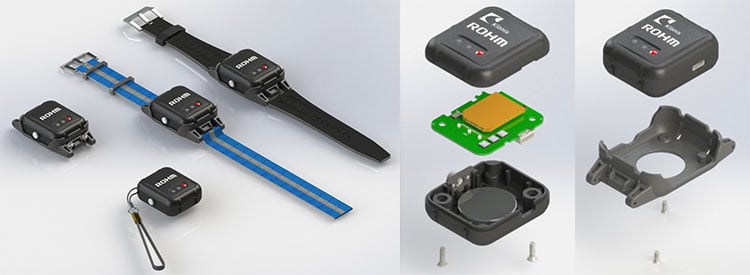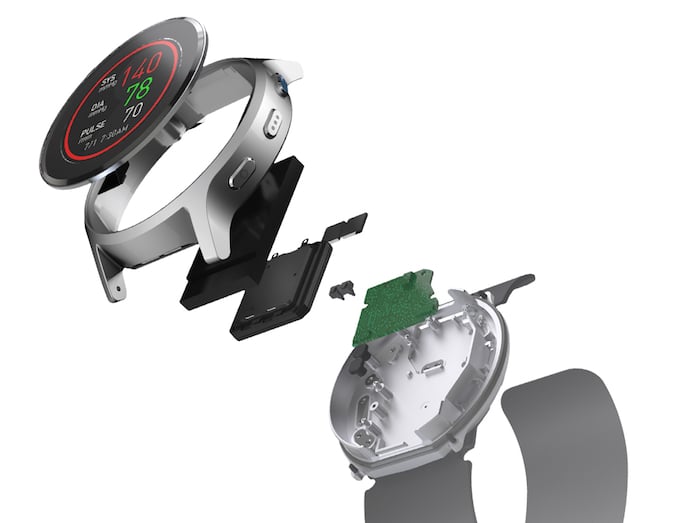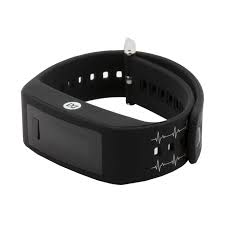ROHM, Omron, Maxim: A Look at the Biometric-Monitoring Wearables Made by Component Manufacturers
The wearables market is by many measures still in its infancy, but many manufacturers continue to push wearable products into the market. How are component manufacturers involved in the wearable market and what are they currently producing?
The wearables market is by many measures still in its infancy, but many manufacturers continue to push wearable products into the market. How are component manufacturers involved in the wearable market and what are they currently producing?
The wearable market still has the feeling of being up-and-coming as mobile devices incorporate more and more sensors. Despite components reducing their footprints and decreasing in cost, however, wearable devices are still a somewhat niche market. Part of this is the fact that there's been a relatively slow takeoff for personal wearable device demand. On the other hand, medical wearable devices are on the rise as companies and medical professionals alike tout the benefits of reliable biometrics monitoring.
Why don't more companies engage in the creation of medical wearable devices? One reason is that wearable device design, especially for biometric monitors, is inherently difficult. Wearable medical device designers must consider the devices' small form factors and light weight, ruggedness, power (both power sources and how power-hungry components are), connectivity for remote monitoring, and the reliability of sensors.
While there is a growing number of contenders in this corner of the wearable market, a trend is forming where parts manufacturers that produce components specific to mobile and wearable fields are beginning to create their own end-user products. From a logistical point of view, this makes sense for a number of reasons, especially if those manufacturers are already producing development platforms and modules that simply need housing to function as a standalone device. They also have exceptional insight into supply chains, market demands, and the designs in which their own components best perform. After all, many times they've already put together a reference design for a product.
So which manufactures of wearable parts are producing their own wearable electronics?
ROHM
ROHM is a Japanese semiconductor manufacturer that originally started out producing resistors (hence the name R-Ohm) but then turned to semiconductors. Since then, it has become a major player in the semiconductor market. However, with the introduction of their IoT platform, RoKiX, ROHM decided to utilize their own product and announced the RoKi Sensor Node in June of 2018.

RoKi sensor node. Image used courtesy of ROHM
This wearable device, with a similar appearance to a digital wristwatch, incorporates multiple sensors including accelerometers, magnetometers, a gyroscope, a barometer, and thermometer with the intention of being a development platform to enable engineers to develop IoT products faster.
Powered by a Nordic nRF52840 Bluetooth SoC, the RoKi contains a 64MHz 32-bit ARM Cortex microcontroller, 1MB flash memory, and 256KB of RAM. The platform is also designed to be expandable with the ability to be mounted to external projects as well as a purpose-built wrist band for use as a wearable device.
Omron
Omron is another familiar name to engineers in the components sector. They produce parts such as switches, connectors, relays, and even sensors. They also are involved in applications such as facial recognition for autonomous vehicles. Most of the world, however, knows Omron for their medical equipment, such as home blood pressure cuffs, scales, and more. It isn't too surprising, then, that Omron's decided to put their medical-grade components into a proprietary wearable.
This January, Omron released what they claim to be the world's first wearable blood pressure monitor, the Omron HeartGuide.

An exploded view of the HeartGuide. Image used courtesy of Omron
While the device, itself, is capable of recording blood pressure, sleep patterns, and creating reminders for daily tasks (similar to a smartwatch) the main goal of the HeartGuide is to eliminate cardiac and stroke events by using the gathered data to inform the user if their blood pressure goes beyond specified limits. According to their website, the HeartGuide uses an inflatable cuff to take blood pressure readings and the design as a whole required more than 80 patents on component miniaturization.
Maxim Integrated
Maxim Integrated is mostly known for its wide range of semiconductor products including analog and mix-signal devices. Their products range from CAN transceivers, op-amps, and embedded security authenticators. Many of their products, however, have been specifically geared towards wearable applications and biometric monitoring, such as PMICs, biopotential and bioimpedance sensors, and data converters.
In the past, Maxim has produced wearable products using their own parts, both as development platforms and as user-end wearables. From the hSensor platform, built around the MAXREFDES100 board, to the updated Health Sensor Platform (HSP) 2.0 (which Maxim called the "first wrist-worn platform" for ECG, heart rate, and temperature monitoring), Maxim spent much of 2018 on developing solutions for biometric monitoring wearables.
In June of last year, Maxim released the MAX-HEALTH-BAND, a wrist-worn heart rate and activity monitor that is capable of recording vital signs with high accuracy.

MAX-HEALTH-BAND. Image used courtesy of Maxim via Digi-Key
The wearable is built around several Maxim Integrated products including the MAX20303 wearable power management solution and the MAX86140 optical pulse oximeter and heart-rate sensor. The wrist band incorporates Bluetooth so both algorithmic output and raw sensor data can be streamed to a smartphone with which custom algorithms can be applied to the data. But Maxim has also released another device, the MAX-ECG-MONITOR which is an evaluation and development platform for designers wanting to work with the Maxim MAX30003; a fully integrated ECG IC designed for wearable applications.
Wearable devices are continually pushing the need for the miniaturization of components. Meanwhile, the push for more biometric data collection for preventative health applications is becoming ever more popular. It is this utility that may push wearables from the realm of interesting tech into true staple of the electronics industry.
But will the products of tomorrow be produced by component manufacturers as opposed to dedicated manufacturers? That is a question that will be answered in the years to come as product fabrication methods continue to evolve.







